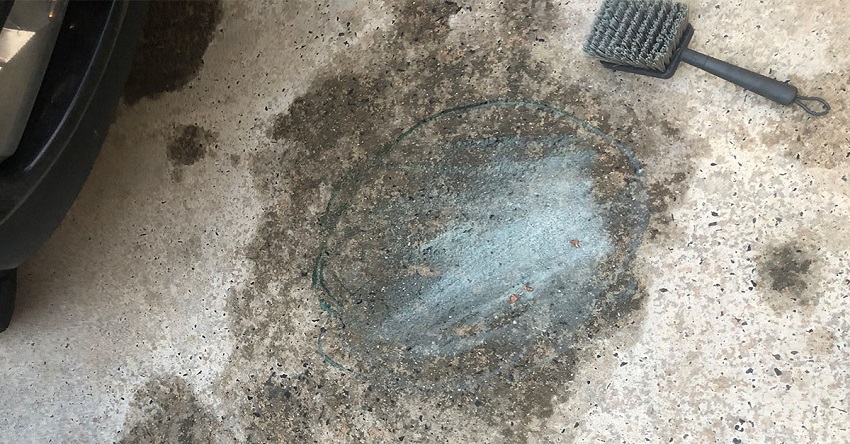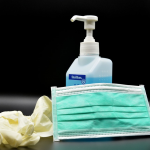Welcome to this comprehensive guide on how to effectively remove long-term oil stains. Whether you’re a homeowner dealing with stubborn oil stains on your driveway or a business owner trying to maintain a clean garage, we understand the frustration and importance of finding a solution that works. In this article, we’ll delve into the most effective methods to tackle those pesky oil stains and reclaim the pristine surfaces you desire. The article is developed by firstgradeappliances.com
Understanding the Challenge: Long-Term Oil Stains
Long-term oil stains can be a real headache. Over time, oil can penetrate deep into porous surfaces like concrete or asphalt, making it extremely difficult to remove with regular cleaning methods. Rain and weather conditions might even spread the oil, making the stains look even more unsightly. However, fear not! With the right approach and the right tools, you can conquer these stains and restore your surfaces to their former glory. Do you know how to remove old oil stains from unfinished wood? Explore now.
The Importance of Swift Action
Before we dive into the methods of removing long-term oil stains, it’s essential to stress the significance of swift action when dealing with spills. The sooner you act, the easier it will be to remove the oil. Remember, the longer the oil sits, the deeper it penetrates, and the harder it becomes to eliminate. So, if you encounter an oil spill, don’t wait – take action immediately!
Method 1: Absorbent Materials
When it comes to tackling fresh oil spills, one of the easiest and most effective methods is to use absorbent materials. Items like cat litter, sawdust, or baking soda work wonders at absorbing the oil and preventing it from spreading further. Simply sprinkle a generous amount of the chosen material over the stain, let it sit for a few minutes, and then sweep it away. Repeat the process until the oil is no longer visible.
Method 2: Commercial Oil Stain Removers
For more stubborn and long-term oil stains, commercial oil stain removers come to the rescue. These products are specifically designed to break down and dissolve oil, making it easier to lift from surfaces. When using commercial oil stain removers, make sure to follow the manufacturer’s instructions carefully. Typically, you’ll apply the product to the stain, let it sit for a specific duration, and then scrub it away.
Method 3: Power Washing
Power washing is an excellent option for larger areas affected by long-term oil stains, such as driveways or parking lots. A power washer uses high-pressure water to blast away dirt, grime, and oil from surfaces. For best results, consider using hot water and an appropriate detergent specifically formulated for oil stain removal. However, be cautious with delicate surfaces, as power washing can cause damage if not used correctly.
Method 4: Biological Remediation
In recent years, biological remediation has gained popularity as an eco-friendly method to remove long-term oil stains. This process involves using naturally occurring microorganisms that feed on the oil and break it down into harmless byproducts. It’s a slower method compared to others, but it’s gentle on the environment and can be an excellent option for sensitive areas.
Method 5: DIY Poultice
A poultice is a powerful, homemade remedy for stubborn oil stains. To create a poultice, mix a binding agent like flour or cornstarch with a solvent like acetone or mineral spirits. The resulting paste should be thick enough to spread over the stain without running. Apply the poultice, cover it with plastic wrap, and let it sit for at least 24 hours. The poultice will draw out the oil, making it easier to clean up.
Method 6: Steam Cleaning
Steam cleaning is another effective method for removing long-term oil stains. Using high-temperature steam, this technique can break down the oil and lift it from surfaces. Steam cleaners are available for purchase or rent, and they work well on various surfaces, including concrete, brick, and stone. Keep in mind that steam cleaning may not entirely eliminate old and stubborn stains, but it can significantly improve their appearance.
Prevention is Key
While knowing how to remove long-term oil stains is essential, preventing them in the first place is equally important. Here are some preventative measures you can take:
1. Regular Maintenance:
Maintain your surfaces regularly by cleaning up oil spills and leaks as soon as they occur. Prompt action can prevent the oil from seeping into the surface and becoming a long-term problem.
2. Sealing:
Consider applying a high-quality sealant to your surfaces. Sealants create a protective barrier, making it harder for oil to penetrate deep into the material.
3. Absorbent Mats:
If you have areas prone to oil spills, consider placing absorbent mats or pads in those locations. These mats will absorb any spills and help contain the damage.
4. Proper Drainage:
Ensure that your property has proper drainage to prevent oil and other contaminants from pooling on the surface. Proper drainage directs spills away from surfaces, minimizing potential staining.
In conclusion, dealing with long-term oil stains may seem like a daunting task, but with the right knowledge and methods, it’s entirely manageable. From absorbent materials to steam cleaning, each approach has its advantages and can make a significant difference in removing those stubborn stains. Remember to act swiftly when spills occur, as early intervention can save you from headaches down the road.




